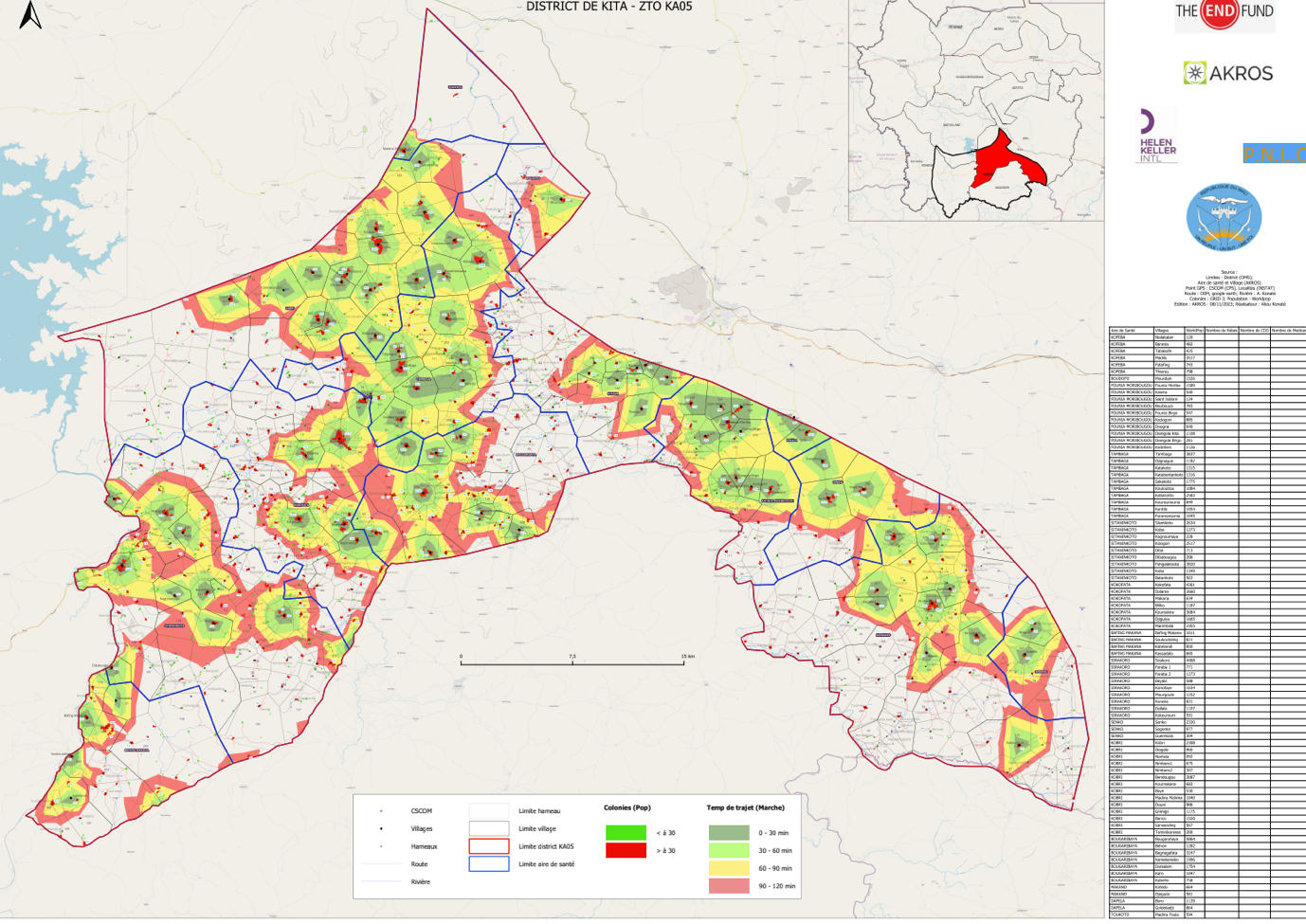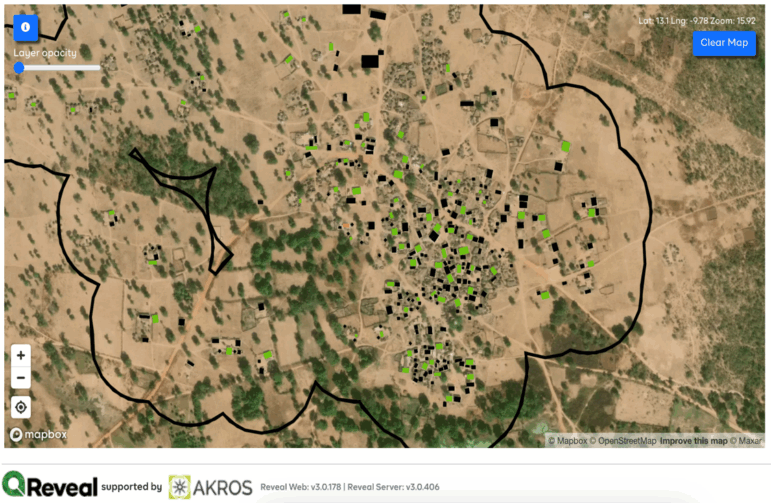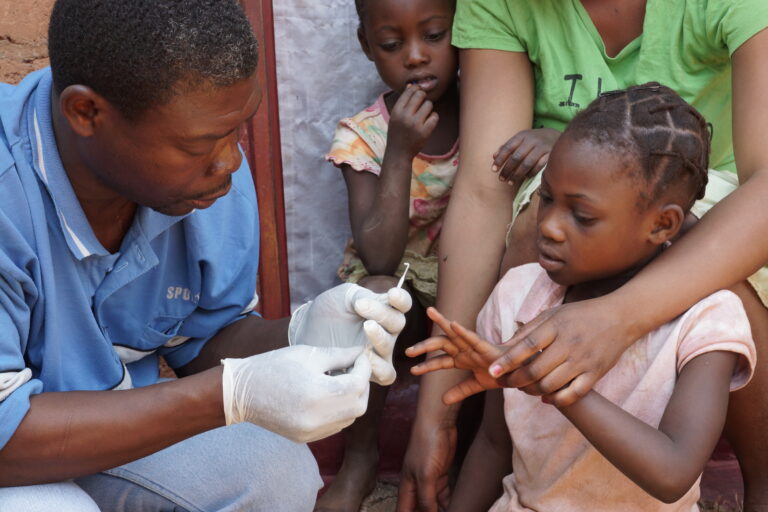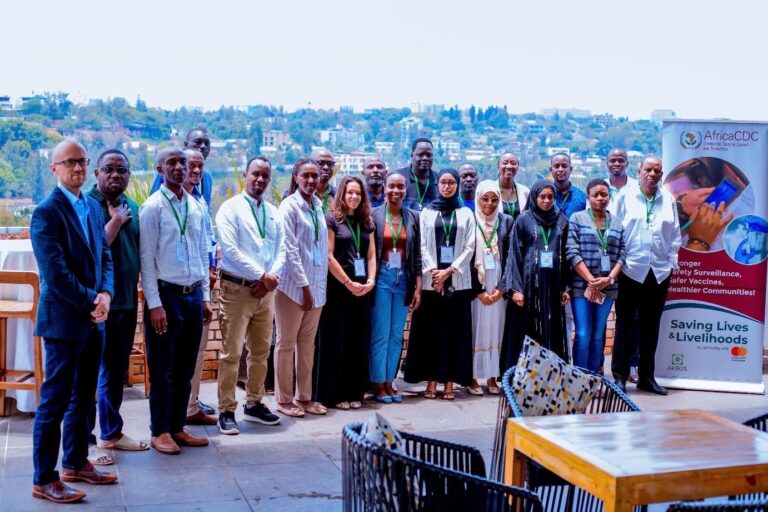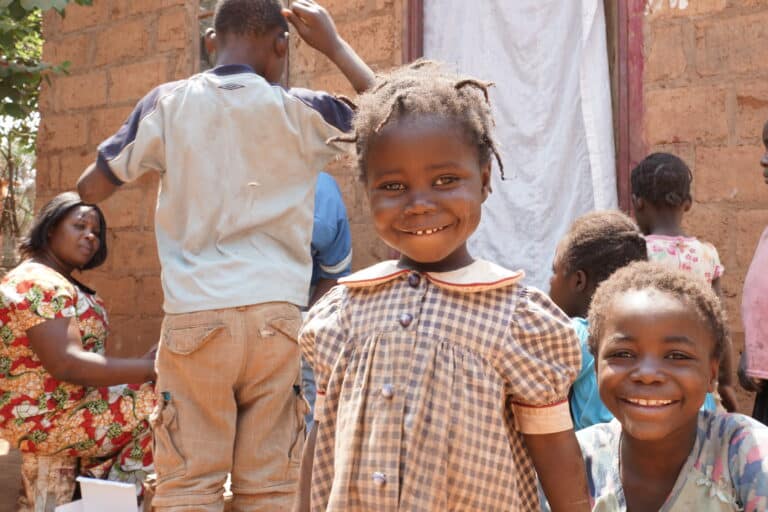Kayes Region, Mali – October 1, 2025 – Akros, in collaboration with Mali’s National Onchocerciasis Control Program (PNLO) and the End Fund has successfully completed Phase Two of the Reveal initiative, dramatically improving treatment coverage against Onchocerciasis in some of Mali’s hardest-to-reach communities.
Onchocerciasis, also known as river blindness, has long posed a challenge to communities in the Kayes region. Despite repeated mass drug administration (MDA) campaigns, coverage rates remained low, particularly in remote hamlets that are difficult to access through traditional, paper-based planning methods and difficult to track whether these small remote settlements are being reached by drug administration teams.
Digital Innovation in Action
The Reveal platform—a geo-enabled, open-source digital tool developed to strengthen health campaign delivery—was adapted and deployed to support Mali’s national NTD program. Using detailed population and settlement distribution maps loaded onto mobile devices, drug distribution teams were guided structure by structure to ensure no household was missed. Real-time dashboards allowed supervisors and national health officials to monitor progress and make rapid, data-driven decisions to improve coverage.
“Reveal transforms the way health campaigns are planned and executed,” said Derek Pollard, Program Manager at Akros. “For the first time, teams that are offline in rural remote settlements could see in real time exactly which households had not been reached yet and respond immediately as these gaps are identified.”
From Low Coverage to High Impact
Phase One of the project, piloted in April 2024, revealed major challenges with digital adoption and MDA deployment, resulting in only 38.4% of households recorded as treated. However, through improvements in training, supervision, and communication, the March 2025 campaign using Reveal achieved 95.1% household treatment coverage across 1,049 hamlets and 188 villages in the KA05 transmission zone, one of the last areas in Mali still showing significant Onchocerciasis prevalence. In total, the number of people treated nearly doubled, rising from 17,201 in 2024 to 30,099 in 2025, largely due to these remote hamlets being found and covered that had previously shown to be frequently missed.
Cost Efficiency and Sustainability
Initial Reveal setup and pilot costs were approximately USD 150,000. By March 2025, costs had dropped to USD 70,000, with future campaigns projected to cost as little as USD 45,000. This declining cost curve is possible due to investments made by EndFUND in the Reveal platform to support NTD workflows and signals long-term sustainability and the potential for wider adoption.
Government Commitment and Next Steps
Following the success of Phase Two, the PNLO has formally endorsed continued use of Reveal in upcoming MDA campaigns, with the next round scheduled for December 2025. Discussions are also underway to expand Reveal’s use to other health programs, including Mali’s malaria program.
“With Reveal, we now have the tools to reach every household, no matter how remote,” said Dr. Yacouba Sangare, Coordinator of the PNLO. “This is a game-changer for eliminating river blindness in Mali.”
About Reveal
First developed in Zambia to support malaria elimination, Reveal has since been adapted for use in vaccination campaigns and other neglected tropical disease programs across Africa. Its open-source design ensures governments and implementing partners can adopt and scale it for diverse public health needs.
